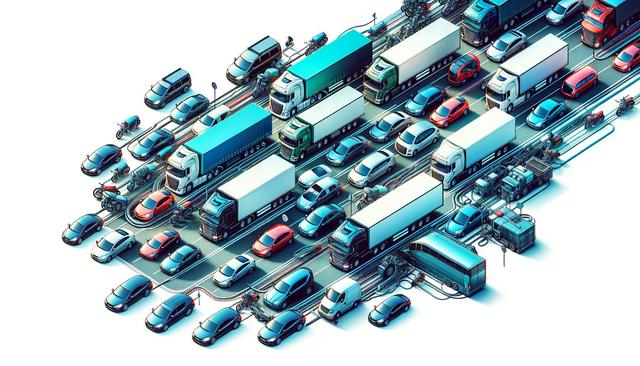The Lifecycle of Auto Transport Coordination
Auto transport operates as a highly synchronized process that requires planning, communication, and execution at multiple levels. From the moment a vehicle is scheduled for transport to its final delivery, a network of dispatchers, coordinators, and drivers work together to ensure a seamless flow. This lifecycle begins with booking, where transport requests are organized based on factors such as destination, vehicle type, and timing. Once confirmed, route planning and driver assignments begin. This phase includes evaluating load capacity, available carriers, and driver schedules. Each step is critical in maintaining efficiency and minimizing downtime. Coordination tools like digital load boards and real-time tracking systems have become essential to streamline this process.
Behind the scenes, dispatch centers act as the communication hub, connecting vehicle owners, carriers, and drivers. These teams monitor progress, address unexpected delays like traffic or mechanical issues, and provide updates to customers. The smooth flow of auto transport depends heavily on these supportive roles that ensure drivers stay informed and aligned with delivery timelines.
Driver Assignment and Route Optimization
Assigning the right driver to the right load is a key step in effective auto transport. Planners consider several variables to match drivers with jobs, such as:
- Geographic familiarity
- Experience handling specific vehicle types
- License category and compliance with regulations
- Availability and current location
Once assigned, drivers receive route plans optimized for time, fuel efficiency, and safety. Technology plays a central role here, with route optimization software helping to avoid construction zones, low-clearance bridges, or restricted roads. In turn, this improves delivery accuracy and reduces wear on vehicles and equipment.
Driver coordination doesn’t end with route planning. Ongoing communication is crucial. Drivers use mobile apps and GPS devices to stay in touch with dispatchers, report any issues, and confirm delivery milestones. This constant feedback loop helps anticipate potential delays and maintain the integrity of the transport timeline.
Communication Tools and Real-Time Updates
Modern auto transport systems rely heavily on real-time communication tools. These range from mobile apps to integrated software platforms that allow dispatchers, drivers, and clients to stay connected. Information such as pickup status, estimated arrival times, and route changes are shared instantly, improving overall transparency and trust.
Key communication tools include:
- Driver mobile apps with GPS tracking
- Automated text and email notifications for clients
- Digital proof-of-delivery documentation
- Central dashboards for dispatchers to manage fleet logistics
Such tools reduce misunderstandings and allow quick adjustments when unexpected events arise. For example, if a road closure affects a delivery route, dispatch can reroute the driver in real-time. This reduces idle time and keeps the flow of transport on schedule. Being ‘on the move’ becomes more manageable when everyone involved is behind the wheel of a well-connected system.
Challenges in Coordinating Drivers
Despite technological advancements, coordinating drivers in auto transport comes with its own set of challenges. One of the most common is schedule adherence. Delays due to weather, traffic congestion, or mechanical issues can create ripple effects across multiple deliveries. Additionally, driver fatigue and hours-of-service regulations limit how long drivers can operate, requiring careful planning to avoid penalties or safety risks.
Other notable challenges include:
- Communication breakdowns between drivers and dispatchers
- Vehicle damage during transit and the need for proper documentation
- Load imbalances when demand is higher in specific regions
- Managing last-minute cancellations or changes in delivery instructions
To address these issues, many transport companies invest in driver training programs and encourage open communication. Creating a culture where drivers feel supported leads to better outcomes and smoother coordination. In turn, it helps maintain a consistent and predictable transport flow.
Efficiency Through Technology and Human Oversight
The balance between automation and human oversight is at the heart of successful vehicle transport. While software handles data analysis, route planning, and updates, human judgment ensures flexibility when things don’t go as planned. Dispatch teams monitor traffic patterns, weather reports, and driver wellbeing to make real-time decisions that software alone might miss.
Efficiency improvements often come from combining both elements effectively:
- Using predictive analytics to anticipate delivery slowdowns
- Automating routine tasks like check-ins and status updates
- Empowering drivers with decision-making tools for on-road adjustments
- Ensuring compliance with transport regulations through integrated systems
As the industry continues to evolve, the integration of AI and machine learning tools is expected to further refine coordination efforts. However, the human element—drivers, dispatchers, and coordinators—remains essential for adapting to unique cases and ensuring quality service delivery.
Conclusion: Keeping the Wheels in Motion
Coordinating auto transport requires more than just moving vehicles from point A to point B. It involves a complex web of planning, communication, and adaptability. When drivers are well-supported and equipped with the right tools, the entire system flows more efficiently. Whether you’re a logistics manager, a driver, or someone shipping a vehicle, understanding this behind-the-scenes coordination offers valuable perspective on what it takes to keep vehicles on the move and deliveries on track.




Leave a Reply